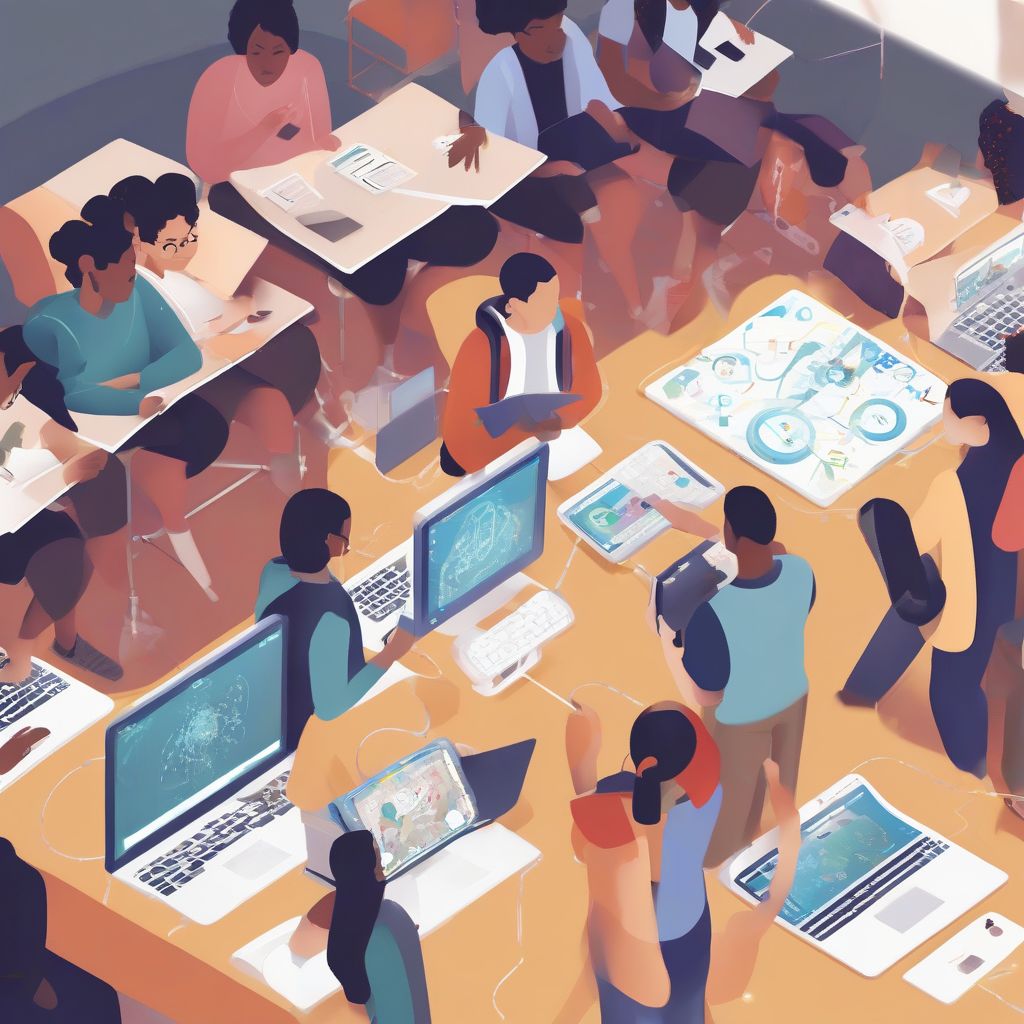Have you ever daydreamed about a world where education could be tailored to each student’s unique needs and learning styles? Where the classroom isn’t limited by the pace of the average learner, but instead adapts to nurture the potential within every individual? That’s the promise of personalized learning, and with the advancements in artificial intelligence (AI), this dream is rapidly becoming a reality.
What is Personalized Learning and Why Does it Matter?
Personalized learning is an educational approach that aims to customize the learning experience for each student, taking into account their individual strengths, weaknesses, skills, needs, and interests. It’s about moving away from a one-size-fits-all model and recognizing that every learner is unique.
Why is this shift so important? Traditional classrooms often struggle to cater to such a diverse range of learners. Some students might breeze through concepts, while others lag behind, leading to boredom, frustration, and ultimately, disengagement. Personalized learning addresses this by:
- Boosting Engagement: When learning materials are relevant and engaging, students are more likely to stay motivated and invested in their education.
- Improving Outcomes: By targeting specific areas for improvement and providing customized support, students can achieve better academic results.
- Cultivating a Love for Learning: When learning is tailored to individual interests, it becomes less of a chore and more of a joyful journey of discovery.
The Power of AI in Shaping Personalized Learning Experiences
AI acts like a super-powered teaching assistant, capable of analyzing vast amounts of data and using it to create truly individualized learning paths. Here’s how:
1. Personalized Content and Pacing
Imagine a world where textbooks could adapt their complexity based on a student’s grasp of a subject. AI makes this possible. By analyzing student performance data, AI algorithms can:
- Recommend Personalized Learning Materials: AI can curate relevant content from a vast library of resources, including videos, articles, simulations, and interactive exercises.
- Adjust the Difficulty Level: AI can dynamically adjust the difficulty of quizzes and exercises based on a student’s progress, ensuring they’re appropriately challenged.
- Enable Self-Paced Learning: Students can learn at their own pace, revisiting concepts as needed and progressing to new material when they’re ready.
2. AI-Powered Tutoring and Support
Remember the days of wishing you had a tutor on hand to guide you through challenging concepts? AI tutors are now a reality.
- 24/7 Availability: AI-powered chatbots and virtual assistants can answer students’ questions, provide hints, and offer personalized explanations – anytime, anywhere.
- Targeted Intervention: AI systems can identify students who are struggling and alert teachers, allowing for early intervention and additional support.
3. Identifying Learning Styles and Preferences
Just like we all have our own food preferences, we have unique learning styles too.
- Personalized Learning Paths: AI algorithms can analyze student interactions with various learning materials to identify their preferred learning methods – whether it’s visual, auditory, kinesthetic, or a combination.
- Tailored Feedback: AI can provide feedback in a way that resonates with each student’s learning style, making it more effective and actionable.
Real-world Examples of AI in Action
The impact of AI in education is already being felt in classrooms around the world:
- Duolingo: This popular language learning app uses AI to personalize lessons based on user progress and identify areas where they need more practice.
- Khan Academy: This non-profit educational organization leverages AI to provide personalized learning recommendations and exercises across various subjects.
- Coursera: This online learning platform uses AI to personalize course recommendations, track student progress, and even identify students at risk of falling behind.
 AI in Education
AI in Education
Looking Ahead: The Future of AI-Powered Education
As AI technology continues to evolve, its potential in education is boundless.
- Deeper Personalization: Imagine AI systems that can understand not only what a student knows, but also how they learn best, their motivations, and even their emotional state, allowing for even more personalized learning experiences.
- Closing the Achievement Gap: AI has the potential to provide equitable access to quality education, bridging the gap for students from disadvantaged backgrounds and those with learning disabilities.
- Empowering Educators: AI will never replace teachers, but it can augment their capabilities, freeing them from administrative tasks and allowing them to focus on what they do best: inspiring and mentoring students.
Conclusion: Embracing the AI Revolution in Education
The integration of AI in educational technology is revolutionizing the way we learn and teach. By embracing the power of personalized learning, we can create educational experiences that are engaging, effective, and empowering for all students. This is a future where every student has the opportunity to reach their full potential, and AI is paving the way.
What are your thoughts on the role of AI in education? Share your insights in the comments below, and let’s continue the conversation! And for further exploration on integrating technology into your learning, check out this insightful article: How to Integrate Educational Technology into Your Studies.
[amazon bestseller=”educational technology”]
